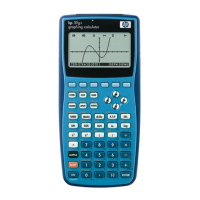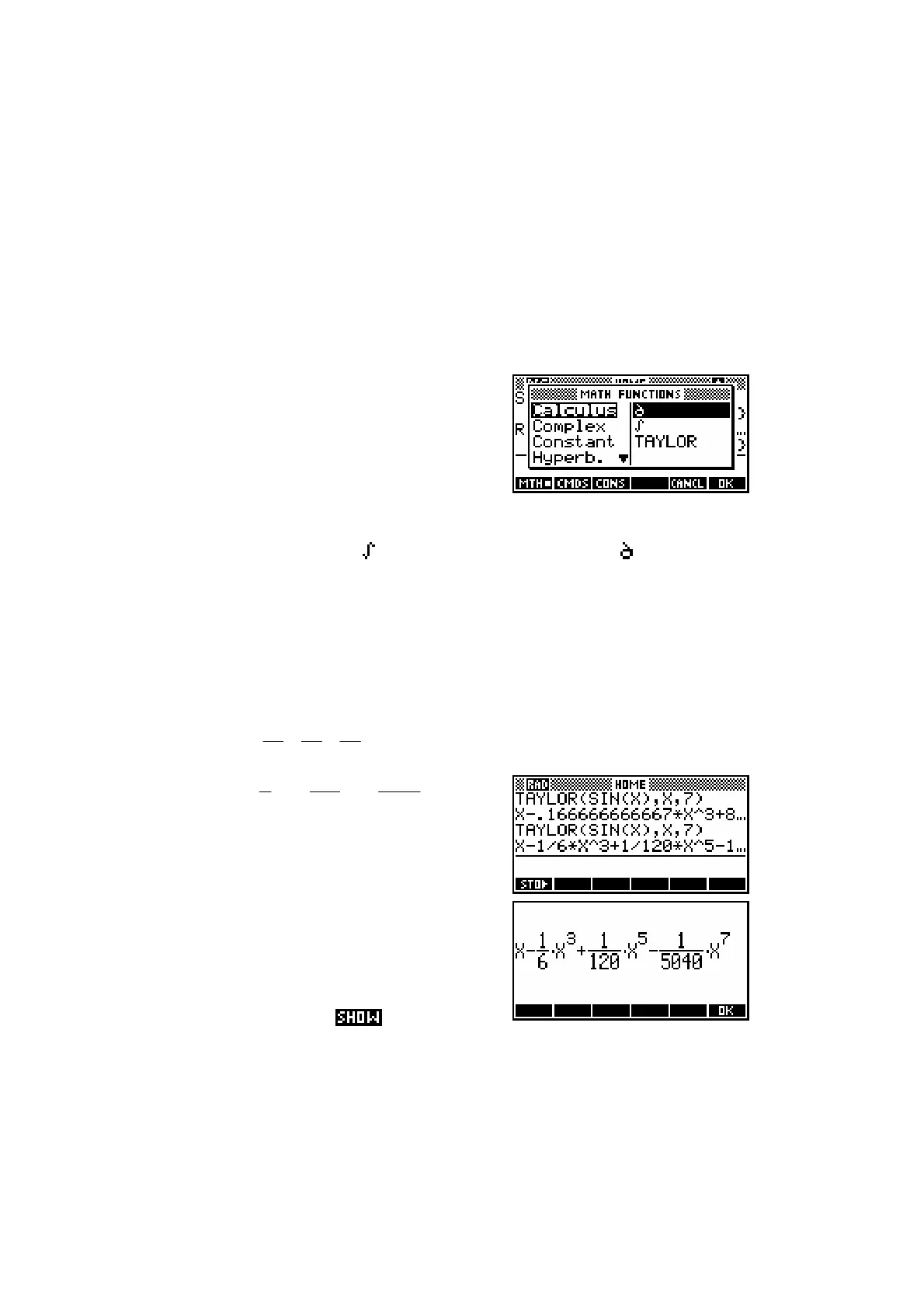261
LNP1(num)
Since the ln( )
function is asymptotic to the y axis as x approaches zero, the
natural logs of numbers close to zero are very large negatives, and possibly
inaccurate. The function LNP1 (”ln plus 1”). By finding the natural log of 1
+
rather than of
, the function becomes able to do its calculations in a domain
in which greater accuracy is possible. This is not something which would
normally be of concern at school level.
T
T
h
h
e
e
‘
‘
C
C
a
a
l
l
c
c
u
u
l
l
u
u
s
s
’
’
g
g
r
r
o
o
u
u
p
p
o
o
f
f
f
f
u
u
n
n
c
c
t
t
i
i
o
o
n
n
s
s
This group consists of three functions, the first two of which are discussed in
detail in the chapter dealing with the Function aplet (see pages 65 to 83). The
functions are the integrate, or function, the differentiate, or function, and
the TAYLOR function, discussed below.
Briefly, a Taylor polynomial allows you to approximate the graph (and hence
values) of a complicated function via a simpler polynomial function. For
example, SIN(X) can be approximated by taking terms from the polynomial:
357
35 7
sin( ) ....
3! 5! 7!
11 1
....
6 120 5040
xxx
xx
xx x x
=− + − +
=− + − +
The screen shot on the right shows the
calculator deriving the Taylor polynomial for
sin(x) up to the 7
th
power.
The first is calculated with MODES set to
Standard, the second with MODES set to
Fraction 4. The screen shot below shows
the fractional polynomial in more detail after
highlighting it and pressing
.

